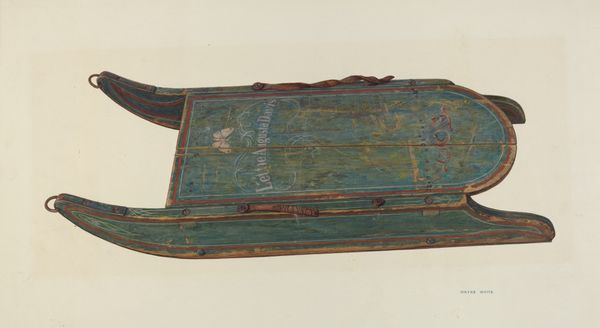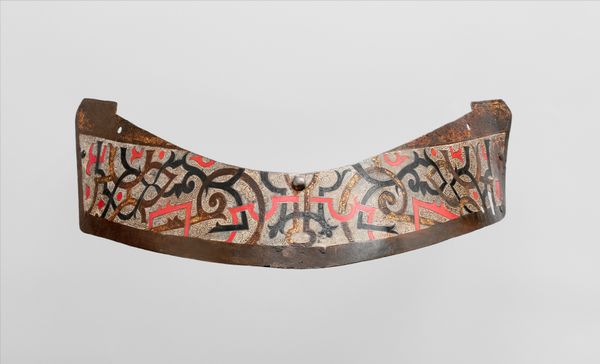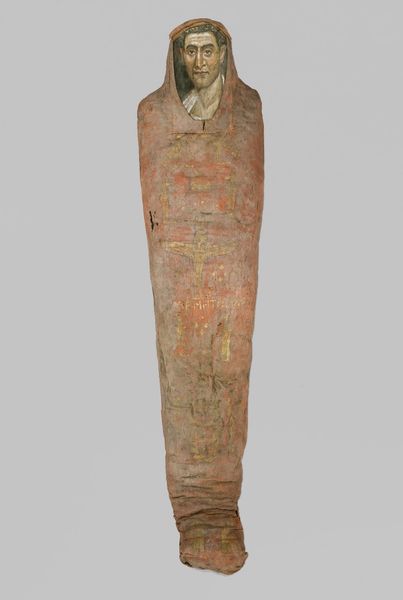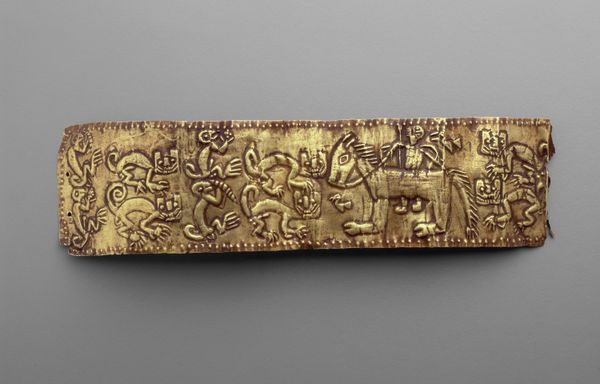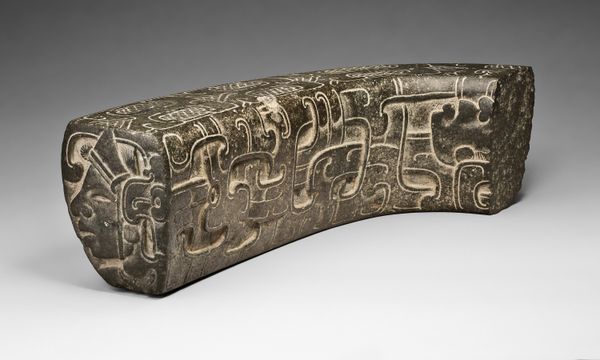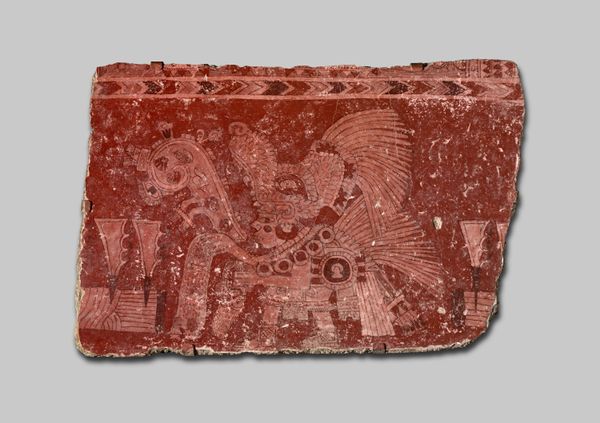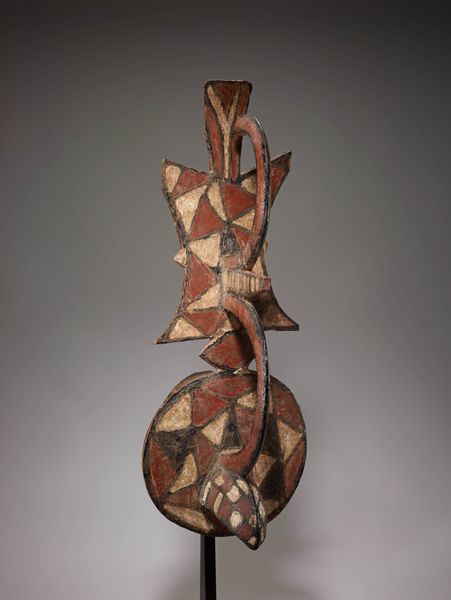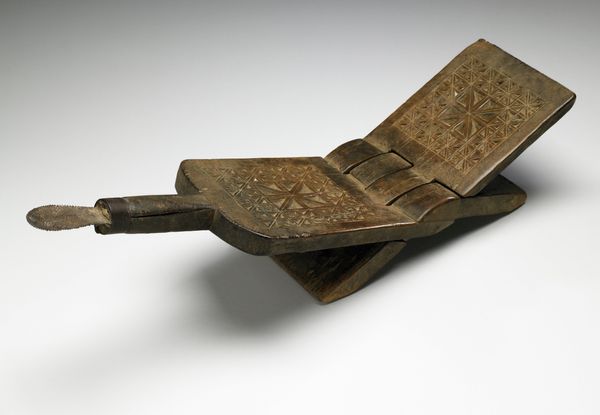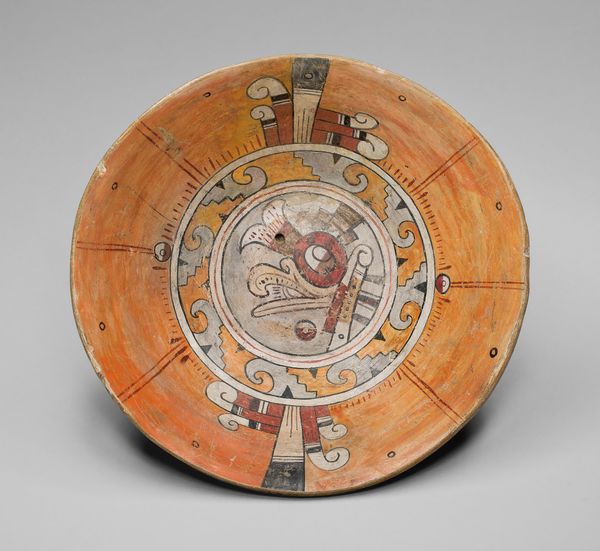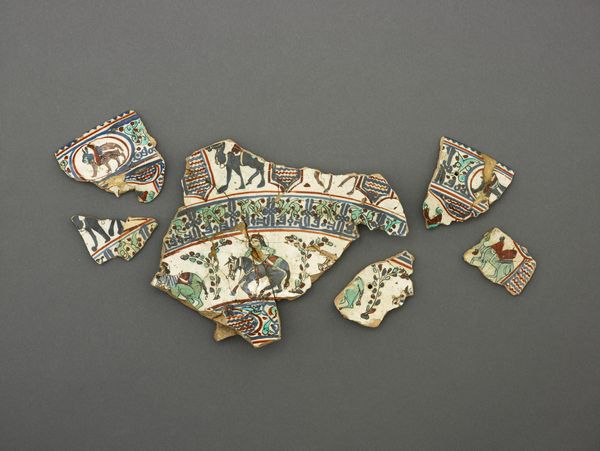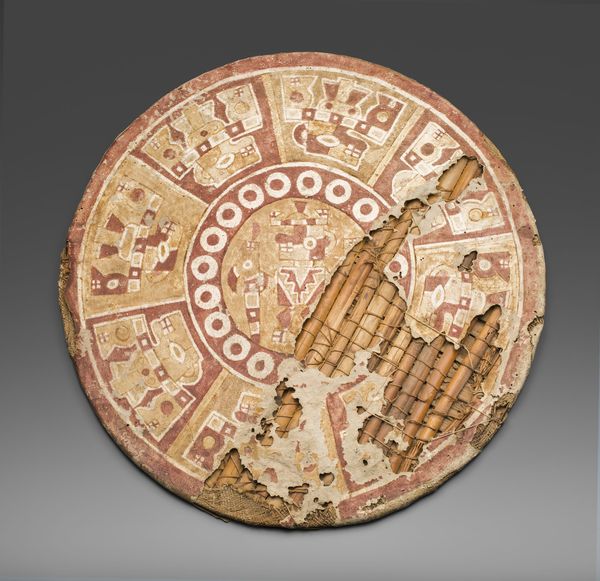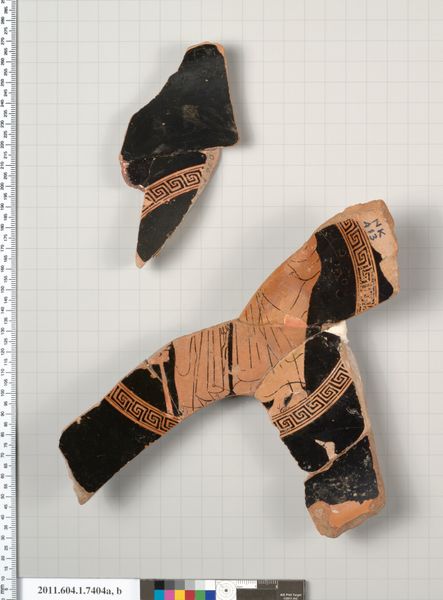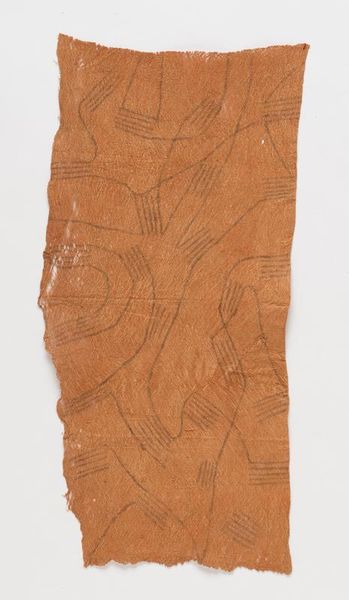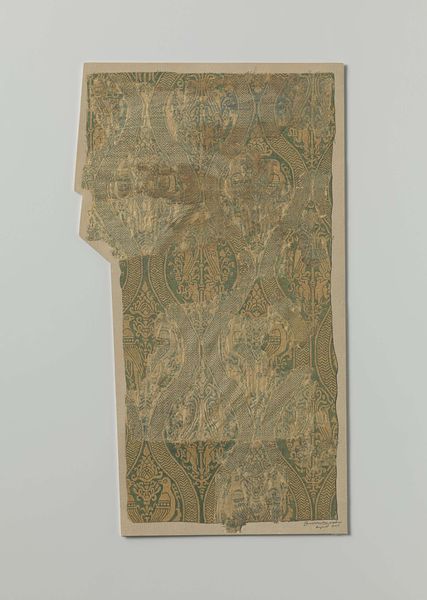
wood
#
figuration
#
geometric
#
wood
#
indigenous-americas
Dimensions: L. 22.0 cm (8 5/8 in.)
Copyright: Public Domain
Curator: This intriguing piece is known as "Box Fragment" from Teotihuacan, dating possibly from 300 to 750 AD. It’s a mixed-media work, primarily wood and paint. Editor: It's evocative; the worn edges and muted tones create a sense of history, but the geometry speaks to something ordered. It's strangely calming. Curator: It is, indeed. This fragment hints at the sophisticated cosmologies and social structures of Teotihuacan society. The figuration points toward narrative, potentially a story central to their worldview or even an important historical record. Editor: Note how the artist employs vertical and horizontal lines to organize the surface, breaking up any chaos from the multiple subjects presented, achieving visual harmony despite the apparent fragmentation and disorder brought about by damage to the piece. Curator: Absolutely. And that relates directly to how social stratification played out and was reflected in daily lives of Teotihuacan inhabitants. We’re not just seeing design here; it’s the blueprint of their societal ideals, the power dynamics inscribed within everyday objects. Editor: Yet, in spite of our analytical division between figuration and the background, I see an intrinsic interplay; both the subjects and the geometric forms come forward to capture the viewers’ attention. Neither dominates; each elevates the other. Curator: Yes! And considering this likely adorned a box of significance, the act of concealing then revealing the depicted narrative suggests power dynamics inherent in how knowledge was disseminated and who controlled access. It invites us to consider themes of inclusion and exclusion relevant today. Editor: Considering it’s just a fragment, the geometric and organic unity in the design feels astonishingly complete. The interplay among these colors--browns, yellows, greens--enhances our sense of completion and containment. It’s almost as if there is no fragmentation, just integration and wholeness. Curator: The piece reminds us how objects, seemingly decorative, carry complex cultural information. It offers a lens to re-evaluate contemporary discussions on cultural heritage and appropriation. Editor: Indeed, there's a striking elegance to how simple materials create such depth of visual interest, creating more than simply decoration or design.
Comments
No comments
Be the first to comment and join the conversation on the ultimate creative platform.
